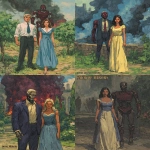Explore the Best AI Image Gallery

Beyond the Canvas: Wearable Tech and the Evolution of Creative Expression
The world of creativity has always been driven by innovation. From the advent of the paintbrush to the digital revolution, artists and designers have continuously sought new tools and mediums to express their ideas. Today, wearable technology is ushering in a new era of creative exploration, blurring the lines between physical and digital realms and empowering individuals to interact with art and design in unprecedented ways.
From Concept to Creation: Applications of Wearable Tech in Creative Industries
Wearable technology offers a diverse range of applications that are transforming various aspects of the creative landscape:
- Interactive Art Installations: Imagine stepping into an art exhibit where your movements trigger light shows, sound effects, or even changes in the displayed artwork. Wearables can act as sensors, allowing viewers to become active participants in the artistic experience, blurring the boundaries between observer and participant.
- Fashion Design Revolution: Wearable tech is pushing the boundaries of fashion design, integrating interactive elements, responsive fabrics, and personalized displays. Clothing can now react to its wearers environment or emotions, creating dynamic and expressive garments that go beyond traditional aesthetics.
- Augmented Reality (AR) for Design Visualization: Architects, interior designers, and product developers can utilize AR headsets to visualize their creations in real-world environments. This allows for iterative design processes, enabling them to refine their concepts and make informed decisions before physical prototypes are created.
- Musical Instruments of the Future: Musicians are exploring new sonic possibilities with wearables that act as controllers for instruments or generate sound based on movement. These innovative devices expand the creative palette for composers and performers, allowing them to push the boundaries of musical expression.
Navigating Ethical Considerations
As with any transformative technology, wearable tech in creative industries raises ethical considerations that require careful attention:
- Data Privacy and Security: Wearables collect vast amounts of personal data, including movement patterns, physiological responses, and even emotional states. Ensuring the privacy and security of this data is paramount.
- Accessibility and Inclusivity: Its crucial to ensure that wearable tech tools are accessible to individuals with diverse abilities. Designing inclusive solutions that cater to a wide range of users is essential for equitable access to creative opportunities.
- Algorithmic Bias: AI algorithms used in creative applications can perpetuate existing societal biases if not carefully developed and monitored. Its vital to address potential bias in training data and design systems that promote fairness and diversity in creative outputs.
The Future of Creativity: Trends Shaping the Landscape
The integration of wearable technology into creative industries is constantly evolving, with several trends shaping the future:
- Increased Personalization: Wearables will empower individuals to tailor their creative experiences to their unique preferences and styles. Expect to see more personalized art installations, responsive fashion designs, and customized musical instruments.
- Immersive Experiences: Advances in AR and VR technologies will create immersive creative environments where users can interact with digital worlds and collaborate with others in real-time.
- AI-Powered Creativity: Artificial intelligence will play an increasingly prominent role in assisting creative processes, generating new ideas, and automating repetitive tasks. This will free up human creativity for higher-level conceptualization and innovation.
Wearable technology is not merely a tool but a catalyst for profound change in the creative landscape. It empowers individuals to express themselves in novel ways, blurs the lines between physical and digital realms, and fosters new forms of collaboration and interaction. As this technology continues to evolve, we can expect even more groundbreaking applications that will redefine the boundaries of artistic expression and innovation.


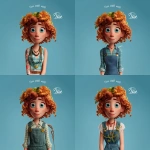

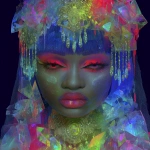
](https://images.ai-img.art/thumbnails/150/1202074d0d60b08b64d0f91f36468608aaac200a02b721cc8e6d8ec8a908432c.webp)

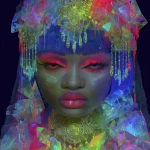




](https://images.ai-img.art/thumbnails/150/655229c40961cb7ff5abd4b4190e02c94ea1a961106e7547a562649c945268be.webp)
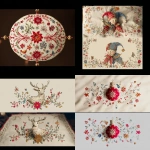


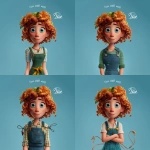





](https://images.ai-img.art/thumbnails/150/6c909fd6d38caac6572b592dd97831deb7d6562bba142798574677582676dfc1.webp)
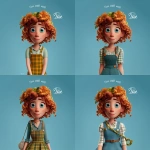




](https://images.ai-img.art/thumbnails/150/e6a179db327f0374ec327d0fdab48ac1f2dc47123eed103b0a41ed346280d07d.webp)

](https://images.ai-img.art/thumbnails/150/26c16e4f635deee86633de398088ca98d9bb748d6e7601436b07e882fab236cb.webp)




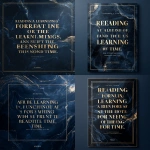
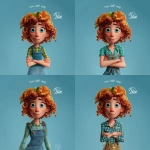
](https://images.ai-img.art/thumbnails/150/60973df1d727dbbf8e6922b7e4836814ab6012106eb9dcfe99aea7aec15f3710.webp)



](https://images.ai-img.art/thumbnails/150/184b4b030e30be0a6d51b544226cb4cf2271977814d935d3aaa2b7529355b3b7.webp)


